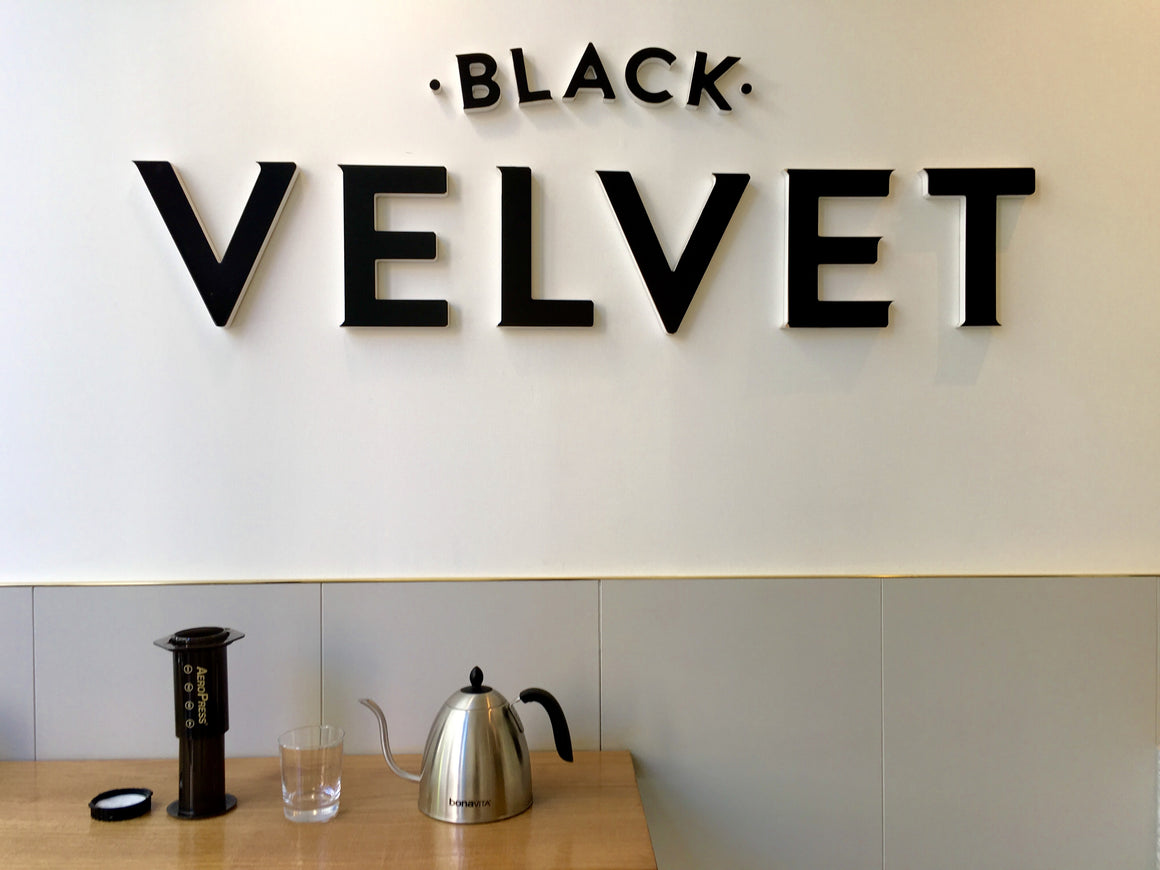Grinder Adjustment
I love the response that we receive for all of our blogs but no topic is more polarising than one that addresses grinder adjustment.
Like anything, calibrating your commercial coffee grinder is something that takes practice. Let me ease your mind a little. It's not as difficult as you may think. When I was first taught to roast coffee, I was told that the task was a simple process once I understood how coffee behaves. Once I understood this, it would become easier to understand the roasting process. It's no different when extracting coffee on an espresso machine and the theory is exactly the same when understanding grinder adjustment.
(For grinding and dosing coffee for home, also read Coffee Grinder Adjustment - for home)
Quite simply, if you understand the 'why', then the 'how' is quite simple.
Try Voodoo Child - our most versatile blend CLICK here
Checking your grind should be done every morning prior to opening and should also be monitored throughout the day, particularly in erratic weather conditions. Many cafes and espresso bars ignore this procedure and the result is inconsistent and poor tasting espresso. I can't begin to tell you how many times I've been told...'the grinder was set up when we first opened our store and we were told never to touch it again.' If you ever wanted a reason why coffee is better or worse from one cafe to the next then here is exhibit A.
So here goes. Oils are extracted from ground coffee using heat and pressure and it's always going to be easier to extract from coffee if the beans are warm rather than cold. Coffee beans, like anything, constrict when they are cold and expand when they warm up so trying to make espresso with cold coffee will make life harder than it needs to be (hence the reason we don't store coffee in the fridge). Always use coffee beans at room temperature.
Now imagine this. If you had a glass filled with fine sand and another glass filled with larger pebbles and poured water into them both, the water would pass through the pebbles almost instantly while the same amount of water would struggle to pass through the sand. It's the same with coffee. The finer the grind, the slower the extraction, while the more course the grind, the faster the extraction.
Remembering your desired extraction time you will find that the warmer the weather, the warmer the beans, the finer the grind. The cooler the weather, the more course the grind needs to be.
So...as time passes throughout the day, most often the weather conditions change and usually warm up. Therefore you'll notice that your extraction will become faster as the day progresses. This suggests that a minor adjustment to the fine side may be required periodically through the day.
If you are using quality coffee, an excellent espresso machine, and a skilled barista, but do not have the coffee grinder adjusted for current conditions, the coffee produced can be of poor quality: either under extracted (extracted too fast), which will taste sour, watery and weak, or can be over extracted (extracted too slow), which will taste bitter and burnt. In fact, most often when you consume an espresso that is of poor quality, it is that the grind was set incorrectly for the conditions at that time. No fancy latte art can hide a poor quality espresso.
Fresh Coffee and Grinder Adjustment
Grinder adjustment is critical when using freshly roasted coffee and is a variable that needs to be taken into account when making espresso.
Coffee will emit carbon dioxide (de gas) immediately after roasting and can take at least 7 days before it begins to settle and become more stable. You'll notice a thick and almost bubbly extraction when using coffee in it's first few days after roasting and the extraction will be faster.
As coffee is a natural product, it can change quickly and dramatically during this de gassing process. Does this mean that the coffee cannot be used during this time? No. It certainly can. Although the true flavour profile may not be completely developed until after the degassing process.
Always use Freshly Roasted Coffee.
Optimal Extraction Times
When timing an espresso, the age of the coffee ie the roast date, should be taken into consideration. Also, most coffee roasters will advise on the optimum timing for their own particular roast.
As a general guide, the optimal espresso should be approximately 30ml in length and should extract for approximately 30 seconds depending on the size of your dose. Although, you may want to try different times according to your own taste.
CLICK HERE for Part 2 on Fresh vs Aged Coffee
Remember...
* If the grind is correct, the flow of espresso will begin some seconds after engaging the programmed button
* Flow can be likened to a mouses tail, be rich and smooth and give a golden crema. You will notice the 'tiger stripe' on the surface of the crema
* Extraction should be around 25-30ml over approximately 30 seconds
* If the coffee extracts too quickly, the grind is too course and will leave a sour taste on the sides of your tongue
* If the coffee extracts to slowly, the grind is too fine, leaving a burnt and bitter taste towards the back of your tongue
* Be sure to always clear the neck of your grinder of previously ground coffee when an adjustment is made so as not to mix the different grinds
Are you a looking for a small, portable grinder? Click here for the perfect solution.
12 Responses
James
helpful article, I particularly appreciate and agree that it it helpful to understand the why you would ever adjust your grinder in a commercial setting rather than simply giving a blanket rule
Darren - Black Velvet
Hi Katherine
By recipe, do you mean the yield? If I’m understanding you correctly, I think what you’re saying is that each time you adjust your grinder to get your desired extraction, your yield changes? Is that correct?
Darren
BV
Katherine
Hey there, I am starting to get used to adjusting our new electric, compact grinder and am finding that once it is set I can easily tweek it, according to timing of the extraction. But when I go to adjust it I can’t seem to get the exact recipe and have been told it’s because it’s an organic product and if you are not getting the recipe you need to weigh each time before extraction. I feel like I shouldn’t have to, each time. Apart from my tampering, timing and weather how else do I get to the recipe?.
Bikram
I want no something about the conditions of weather it’s change then how weather effect the beans tell me
tianne
how does grind size affect the taste of coffee and when should you adjust it?
kerri
I was taught that young coffee is very gassy and the water struggles to get through…so you have too much resistence in the puk….so make it coarser for young coffee.
if coffee batch is very old it dries out so it will you need to grind finer to get flavour out…???
ideally you want your coffee beans at the perfect brewing “age” ie date after roasting…. lol I am learning too :)
Daniel
Hey guys, Matt Perger believes when the beans become cooler they go through a glass phase becoming brittle and are easier to grind finer… when beans in the hopper heat up they pass to a plastic phase meaning that you have to tighten up the grind to achieve the same granulometry. That would contradict what you’ve written here… any thoughts?
David Harris
David if you are not adjusting your grind both at the start and during the day, you should not be making coffee. Simple as that!
Sushil
Thanks,
it’s really helpful for me. I find exactly what I want.
If u want to share more, feel free to mail me it would be my honour.
Your regards
Sushil
Greg
I do not think daily grinder adjustment is what should be done.
Firstly, when a grinder is calibrated (set) correctly there are only 2 reasons why you would touch the setting.
1/ Natural ware of the blades requires finer adjustment as blades loose there edge.
2/ If using a dosage grinder with an auto fill ground chamber and humidity is high eg. Hot weather and thunderstorm activity is a likely cause and the pour is slow or dripping, you need to coarse up your grind until the weather stabilizes then you would need to return to the original position prior to the adjustment when humidity levels return to normal.
If using a grind on demand unit the weather should not affect the pour at all as the coffee is used immeadiately and does not sit in the chamber absorbing moisture. Playing with or adjusting the grind should be kept to a minimum, watch your pour and adjust your tamp before any grind adjustment is considered ! The main cause of bitter (under extraction) or (burnt) over extraction is mainly caused by under or over loaded filter basket or incorrect guestimate of operators using grind on demand units and not using the auto dose setting. Most importantly, if changing grind setting on auto fill flick lever grinder you need to remove all ground coffee from front chamber, make your adjustment and only grind a small amount and run a shot to see if it is pouring correctly. Saxon, if coffee is fresh and its a dark roast more oil will be released so you will need to set your grind to suit, if you are using the same coffee but it is aged you will need to set a finer grind as the water (9 bar pressure on commercial machines) will pass through drier coffee grounds easier than fresh oilier coffee grounds, here’s your target : 30ml including crema in aprox 25 min – 30 seconds, you commence timing from the moment you press the shot button. I hope this helps, good luck.
Saxon
So how do you adjust your grind for fresh vs aged coffee … finer/coarser etc? What will/should it look like?
Leave a comment
Comments will be approved before showing up.






Dave
July 31, 2020
Re Greg’s comment (“I do not think daily grinder adjustment is what should be done”). The burrs in many* grinders shrink or expand based on the temperature of the room they’re in. Even if the beans remain identical (age, type, temperature etc), then the grinder would still need to be adjusted to take this into account.
(*Some high-end commercial grinders are built to not shrink/expand).